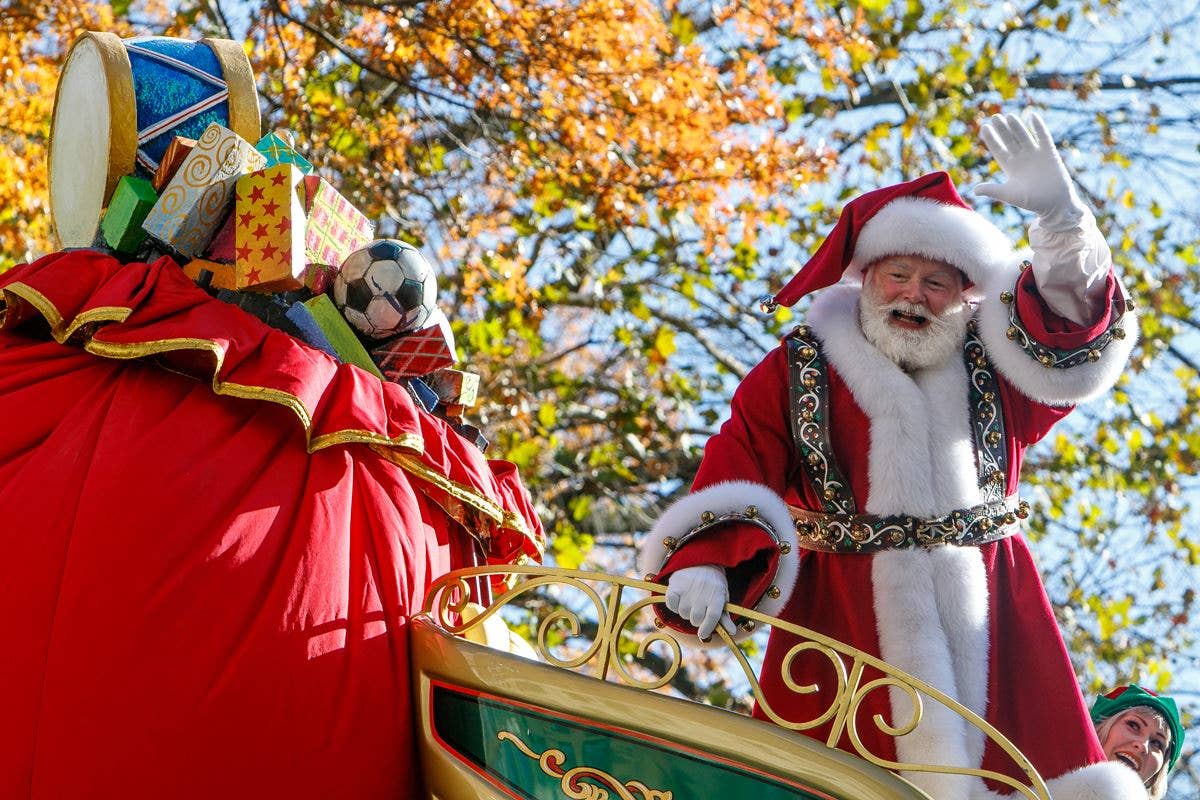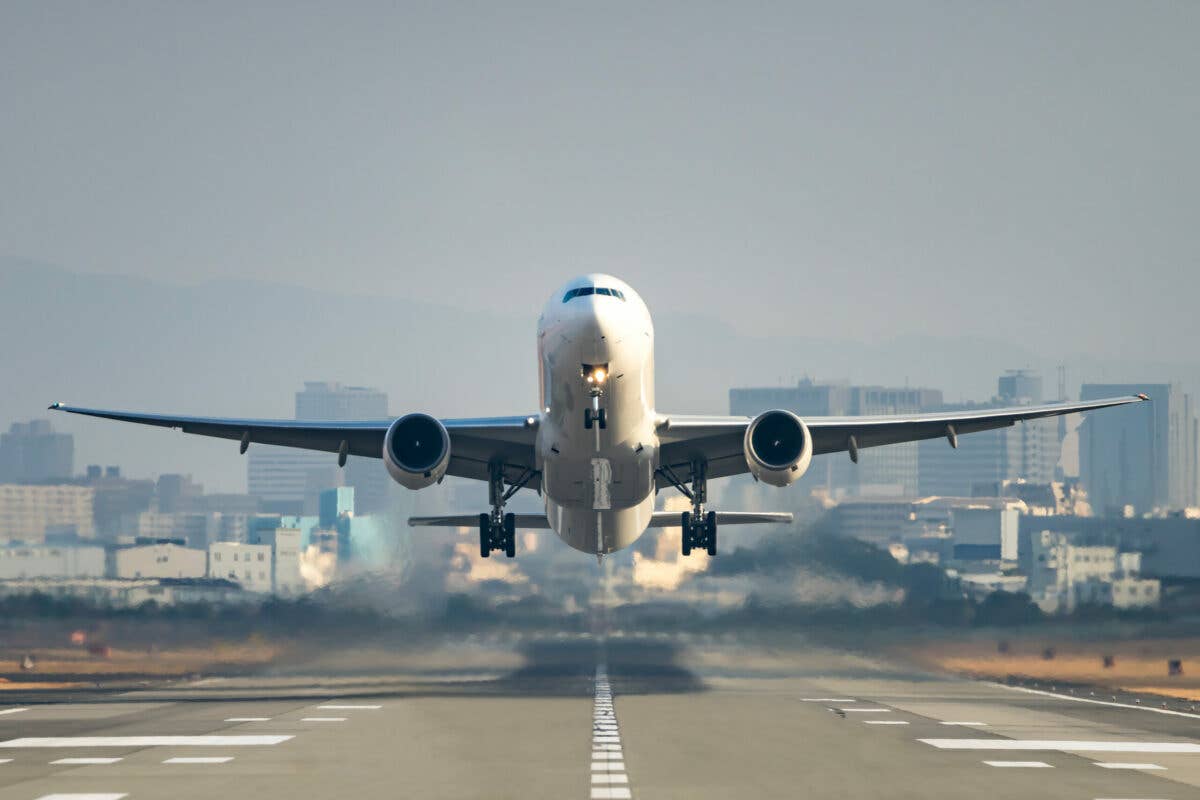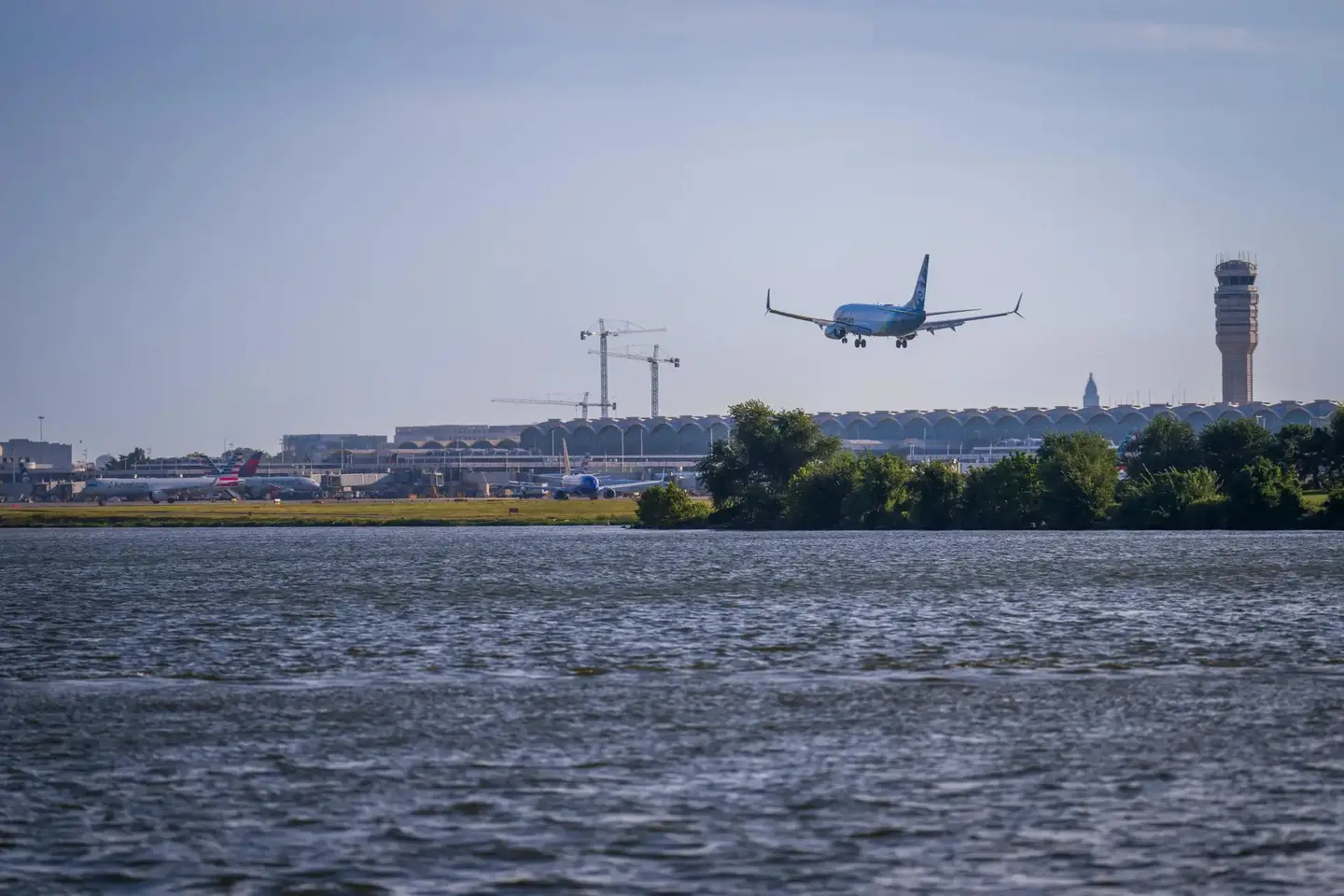
Apart from his public appearances, Santa Claus has rehearsals leading up to Christmas to make sure the famous sleigh is ready to go. [Courtesy: Victoria, Texas Communications and Public Affairs]
There is not a pilot among us who has not wondered about the logistical challenge involved in the queen mother of all cross-country flights—Santa’s trip around the world on Christmas Eve. That consummate aviator, Kris Kringle, aka Santa Claus, graciously made time for FLYING to let us peek behind the curtain, as it were. Although this is his busy season, Santa, like most pilots, made time in his schedule to talk aviation.
Because of the pandemic and COVID-19 restrictions, we had our meeting via a Zoom call. Santa gave us a virtual tour of the North Pole hangar, starting with Mission Control, where a team of elf meteorologists, engineers, reindeer technicians, payload specialists, and mechanics prepared the famous sled for the big night.
“I definitely don’t do this all by myself,” Santa said, clad in a red flight suit and what appeared to be a World War II-era RAF jacket as he led us around the facility, checking his smartphone from time to time for the latest weather updates.
“Like all things in aviation, it takes a village to make a mission of this magnitude happen.”
According to Santa, hundreds of North Pole staff and volunteers join in to conduct the mission—known as Operation Candy Cane. And it takes no fewer than 364 days to get the planning just so.
Mission Control
If you can imagine NASA’s Mission Control combined with the “It’s a Small World” ride at Disneyland, you can visualize the Operations Room at the North Pole.
One wall is dominated by a world map. The mission route is depicted in twinkle lights—white for the course to follow, green for what has already been done.
The room is filled with elves who have demonstrated superior math skills and technical ability—they are now the Flight Ops team.
“We have reindeer technicians, sleigh mechanics, flight planners, meteorologists, payload specialists, and attitude control engineers,” Santa explained as he walked us through the facility.
Throughout the room, elves clad in red and green with brown leather A-2 flight jackets with “OPERATION CANDY CANE” emblazoned on the back poured over iPads to determine the safest and most efficient route. They huddle in small groups, aviation headsets hanging from their pointed ears. Some chewed on candy canes as they did the math required for the mission on the big night.
The elves with the most experience have stylized sleighs painted on the back of their jackets indicating successful missions. A few of them have jackets covered in the markings.
“After 25, they are given the option to transfer to toy making,” Santa said. “They’ve done their duty. A few do, most don’t. There is a special kind of rush they get from being part of Operation Candy Cane.”
Directly above the world map are the world clocks, with each time zone depicted. A handwritten note posted on a whiteboard next to each clock notes the ETA (estimated time of arrival) and the ATA (actual time of arrival). These numbers will be filled on Christmas Eve.
“I keep the largest navlog in the world,” Santa laughed, proudly noting that in this millennia there has never been a failed mission, although there have been a few diversions owing to hazardous weather—but never to a mechanical issue.
“The reindeer are highly reliable,” he said, gesturing to a bank of consoles and computer screens. Each console has a handwritten placard containing the name of the reindeer to which it belongs.
Each deer has its own team assigned to its well-being for the flight. A quick glance at the readouts shows airspeed, respiration, steps per minute, fuel burn, and altitude.
There is also a master readout for the sleigh itself, including some specialized technology to keep the aircraft within weight and balance as the cargo is offloaded.
The sleigh, Santa said, is the most technologically advanced experimental aircraft ever produced.
The Sleigh
At first glance, the sleigh looks like a traditional high-backed design you see on Currier and Ives-inspired Christmas cards. The runners are curved and, according to Santa, designed to retract to minimize drag. There is a squat switch on the left runner that prevents accidental retraction when the sleigh is on the ground with “the weight on the runners.” And, there's a visual/auditory warning, “runners up for flight condition,” with a green light that flashes when the sleigh gets within 50 feet of the ground or a rooftop, to remind Santa to put the runners down. Runners down and locked illuminate a steady green light.
“The reindeer are also pretty good about reminding me to lower the runners,” he chuckled. “I have the flashing light and auditory warning, and on top of that, I have nine reindeer who bellow when we’re getting close to the ground!”
The cockpit of the sleigh is full glass. There is a centralized primary flight display and two multifunction displays.
“One of the MFDs is purely there for back-up. If one fails, the other takes over,” he said.
“There is also a line of analog instruments below the main panel, and the PFD has a backup battery that gives me two hours of flight.”
Santa rocked the master switch and the panel came to life—three screens one at a time, complete with a digital checklist. Santa noted he always carries a hardcopy checklist, an iPad, and paper back-up sectionals.
“The cockpit of the sleigh is full glass. There is a centralized primary flight display and two multifunction displays.”
“You would think after all these years I would know the route cold and I do, but I am a belt-and-suspenders man,” he explained. He pointed to the analog instruments, which are backlit, bathing the cockpit in a soft green glow.
“We used to have red lights, but about 10 years ago, I read a white paper from the FAA describing that green lights gave you better visual acuity in low light situations—I tested it and found this to be true, so we made the switch,” he said. “I have no fewer than three attitude indicators, four if you count the fob technology.”
Fob technology?
With a grin, Santa reached into his pocket and withdrew a large gold pocket watch with a watch fob made from a lump of coal. The watch is placed in a special holder on the panel so the fob hangs straight down.
“It’s basically a plumb line,” he explained. “When the coal hangs down, the sleigh is upright. If it is listing to one side, the sleigh is banked; if it is sticking straight up, I am really having a bad night!”
Santa pointed to the bank of six radios and two transponders beneath the panel. The two transponders squawk the same code, he said, because there have been instances where he’s been mistaken for a possible unfriendly.
“We laugh about it later,” he said with a dismissive wave.
The cargo compartment of the sleigh carries the large bag filled with toys. It doesn’t look like every toy for all the good little children should be able to fit in there, but they do.
How does everything get in that one bag?
“It’s very similar to TARDIS technology from ‘Dr. Who,’” Santa said. “TARDIS, is an acronym for time and relative dimension in space. It is two-fold. It allows enough room to carry the payload required for the mission by making the bag bigger on the inside. Additionally, it includes a sort of cloaking device which makes the sleigh blend in with its surroundings so we can remain hidden during the flight.”
"But how does it make the bag bigger?" I pressed as one of the elves appeared with an iPad—something needed Santa's attention right then.
“I’ll explain later,” Santa said, with a Dr. Who-esq wave of his hand.
What’s the useful load?
“I’m afraid that’s classified,” he replied.
And on the subject of classified, you can forget about getting a direct answer when it comes to getting information about the speed of the sleigh.
Santa described it as “enough to get the job done” and noted that it “makes the SR-71 Blackbird look like a J-3 Cub.”
Santa added that the sleigh is designed to remain airborne with as many as four deer in “coast mode,” a situation that has never happened outside of training.
“I have nine organic powerplants operating at once. We routinely practice shutdown and restart procedures like all multiengine pilots should,” Santa said. “Each reindeer has an individual tether that when tugged indicates shutdown. Restart is initiated with a whistle. We brief about emergency procedures such as loss of thrust on takeoff on each flight,” he said. "The reindeer are trained to fly straight ahead and aim for something unpopulated, soft, and inexpensive.”
Santa practices year-round, doing three takeoffs and landings every 90 days to maintain currency, and he throws in a few more flights a month for instrument proficiency.
“I really step it up in September, practicing approaches and reindeer-out ops—there is a big difference between currency and proficiency,” he noted with a gleam in his eye. “You think things happen quickly in a twin—imagine how quickly things can go wrong when you have nine powerplants working at the same time. It’s very important to get their hooves in sync for the smoothest ride possible, not to mention fuel economy.”
Santa is still the only pilot in the world to hold a ME-R Type rating—multiengine reindeer.
When he first began the once-a-year trips, he had eight reindeer: Dasher, Dancer, Prancer, Vixen, Comet, Cupid, Donner, and Blitzen. Rudolph, he noted, joined the team much later, not for power, but for better visibility—in essence, he is the deer version of a rotating beacon combined with a powerful LED landing light.
“Rudolph was made possible by the field approval of a supplemental type certificate,” Santa recalled. “It was 1939, and there was very thick fog, very low IFR. Failure was not an option. Fortunately, Rudolph with his nose so bright agreed to guide the sleigh that night.”
Santa would not disclose fuel burn, saying western mathematical principles cannot calculate it—but notes refueling during the mission is easily accomplished because most homes leave carrots out for the reindeer.

Sign-up for newsletters & special offers!
Get the latest FLYING stories & special offers delivered directly to your inbox






